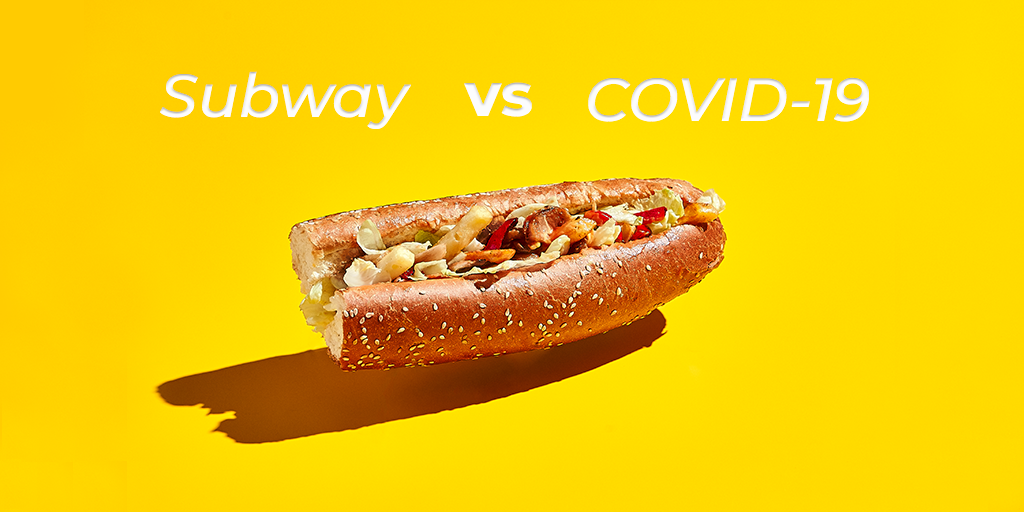The COVID-19 pandemic has undeniably made waves in the restaurant industry. According to the National Restaurant Association, 110,000 places have been closed indefinitely or for good. Additionally, the restaurant industry performed way below its pre-pandemic forecast, with total industry sales being $240 billion less than the projected amount. While this is understandably so given the current circumstances, there is no doubt that such a performance will still have an impact on the industry in 2021, even if sales are expected to grow significantly this year.
Nevertheless, every cloud has its silver lining. And in the case of the quick-service restaurant (QSR) industry, the accelerated digitalization of its operations is definitely it. While it is true that some restaurants struggled to stay afloat during these turbulent times, there were others that flourished. The latter were those who either already digitized their services or have the financial capabilities to shift their services to a more contactless form.
In this article, we will be unpacking some of the ways digitalization has changed the way restaurants operate and why this is likely to be the new norm even after the pandemic ends (which we really hope is soon!). Read on to find out the important role digitalization plays in the restaurant industry today and how you, as a QSR or franchise owner, can get your business to thrive by digitizing it.
Digitalization in the ‘New Normal’
When the pandemic struck, our way of life changed more than we expected it to. For the QSR industry, digitalization played a big part in helping them stay afloat despite the circumstances. So how did the restaurant industry use it to adapt to the new normal? Let’s find out.
Replacement of In-store Services
When it comes to food, hygiene becomes the utmost priority for most consumers. Coupled with the pandemic, it is safe to say that most customers will be warier when buying take-out for their meals. To ensure that their followers don’t lose faith in them, restaurants, and the likes, had to take the extra steps in keeping the virus at bay. Apart from keeping their restaurant compound clean, they also had to ensure that all forms of dine-in services were halted so that they were in line with the government’s guidelines.
Despite this being a huge hurdle to overcome for most restaurants, those that already had an online presence found it easier to navigate this new challenge. For example, McAlister’s Deli’s digital sales were twice as much as it was the previous year. The QSR spent most of last year leveraging technology to improve their service structure and even managed to increase their loyalty base by 7x during the pandemic. Hopdoddy, whose off-premise services made up 12% of its business before the pandemic, also used this opportunity to revamp its digital presence. The burger bar is even looking to develop other tools to make their guest experience better.
One thing’s for sure, digitalization has helped restaurants expand their services to more than just dine-in options so that customers can still enjoy their food from the comforts of their own home. Some of these services include:
- Contactless Payment
- Kiosks for Contactless Ordering
- Direct or Third-Party Delivery Services
- Online and In-App Ordering
- Loyalty Programs
- Drive-thru
- Curbside Pickup
HR Processes
As physical contact was minimized wherever possible, this also meant that most of us had to work from home, a term we are all too familiar with in the past year. And while there were no in-store customers, more staff are needed to support the new services added to the restaurant. In times like this, hiring the right people is more important than ever to ensure that your business is able to run smoothly.
With stringent measures in place, however, it can be difficult to source for and hire the right people for the job. This is where digitalization in the form of hiring software tools comes in to make recruitment easier for you. At Workstream, we offer a suite of hiring tools, including an applicant tracking system that allows you to get a holistic view of your candidates, and a smart screening feature so that you select only from the best pool of applicants. Interviews, onboarding, and job training for your prospective employees can also be done remotely to ensure that safe distancing measures are adhered to. What’s more, most of the hiring processes can be automated so that you can focus on running your restaurant!
If you are looking for ways to streamline your hiring process, reach out to us at Workstream! Our hiring specialist will gladly provide you with a free consultation on how we can best meet your hiring needs.
Impact of Digitalization
Better Understanding of Consumers
For most businesses, minimizing physical interactions was the priority when the pandemic started. Despite this, companies were able to draw a closer connection to their customers. While this might seem counterintuitive, the availability of mass data due to digitalization has allowed restaurants to understand their customers better even without their physical presence. As a result, brands are able to leverage their popular menu on the front and center of their product displays.
Collecting consumer data also means that companies can better personalize what the customers see on their app when they are making a second purchase, for example. And since you know what a particular customer is into, you are able to upsell your items more effectively, resulting in a higher average order value.
Increased Efficiency
Needless to say, the incorporation of technology in our day-to-day activities has significantly increased our efficiency in accomplishing tasks. And the same can be said for restaurant operations. With digitalization, customers can make faster purchases due to the availability of contactless payments. Moreover, they are able to skip the long queues which are, otherwise, unavoidable. Providing prompt and efficient service contributes to the guest experience and if your restaurant is able to give exceptional service to your customers, they will likely remain loyal to your brand in the long run. With so many competitors in the scene these days, gaining a few more loyal customers wouldn't hurt.
Most importantly, using digital platforms to help you with your hiring strategy and other backend processes lets you save precious time. Especially in the QSR industry, where everything seems to happen at the speed of lightning, having automated tools allow the managers to focus on more important tasks, i.e. actually running the restaurant.
Beyond COVID-19
The digitalization of the restaurant industry may seem unprecedented but it was something that was bound to happen in the near future nevertheless. We’re just seeing the accelerated version of it - which, if we’re being honest, works entirely in our favor. After all, it has opened up other sales channels that did not exist before and increased our efficiency by so much more.
As the pandemic situation improves, we will likely see dine-in services slowly revert to how it was before. This, however, does not mean that the technological advancements we have made are for naught. Since most restaurants have adopted a digitalized strategy, you would probably need to do the same to stay abreast with your competitors. In fact, expect to see even more digital innovation in the restaurant industry in the years to come, while the current digitalization becomes the norm.
“2021’s big disruption for restaurant operators will not be an unforeseen pandemic, but rather failure to anticipate the required shift in digital transformation strategies needed to compete in a rapidly changing landscape.” - Dipesh Hinduja, Senior IT Manager and Technical Architect at Stratix
For more insights and updates, subscribe to our blog.




